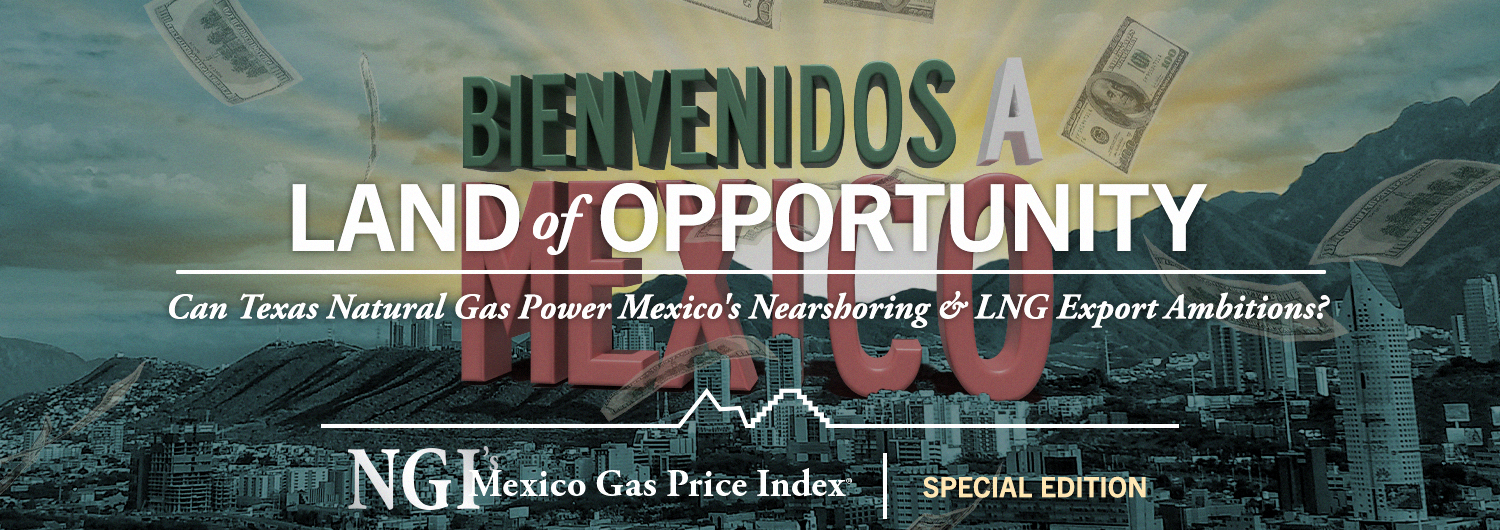
The world’s economies and energy systems have undergone profound transformation over the past four years due to the double whammy of Covid-19 and Russia’s invasion of Ukraine. As a result, North American energy markets have grown more integrated, with U.S. natural gas pouring across the border to serve Mexico’s growing industry, and its developing LNG export plans. All this points to a tremendous opportunity for participants in the natural gas industry on both sides of the U.S.-Mexico border.
This 16-page NGI Special Edition looks at what these seismic shifts mean for the natural gas market in Mexico. Through articles, interviews, and columns, our experts analyze the major political, natural gas pricing and energy infrastructure trends shaping the sector and what to expect in the years to come.
Download the 'Land of Opportunity' Special Edition:
Special Edition Features
- 16 pages full of news, analysis, charts, and forecasts
- How can Mexico capitalize on the trend toward industrial nearshoring?
- Analysis of the importance of a domestic natural gas price index in Mexico
- Can Mexico fulfill ambitions to become a net LNG exporter?
- A deep dive into hopeful signs for Mexico natural gas market development
- How a robust natural gas market in Mexico benefits both public and private sectors
- First-person perspective into the present & future of Biogas in Mexico
Special Edition Highlights
“We have to be prepared for the opportunities that will present
themselves post-2024,” said Duncan Wood, vice president of strategy
and new initiatives at the Wilson Center think tank.

It should not be difficult for prevailing energy policy makers
to see that transparency, non-discriminatory regulation and efficient
capacity management are essential to their industrial policy objectives. Open seasons in the Sistrangas should be the standard practice
for the efficient expansion of its capacity.

“Until we look at the market and come up with a Mexican gas reference price that reflects the fact that the alternative is importing gas from the U.S., and allows the producers to realize at least a portion of the transportation premium, we’re always going to be at a cost disadvantage…” said Jaguar Exploración y Producción CEO Warren Levy.

CFE imports more than half of Mexico’s total gas supply via
pipeline from the United States. Private marketers, meanwhile, import
about 16% of Mexico’s total gas supply, according to a presentation
this month by Aniel Altamirano, deputy general director of CFE’s domestic gas marketing affiliate CFEnergía.

“Latin America could become a net
LNG exporter [by 2030] if the majority of proposed projects reach”
final investment decision or FID, Chapa said.

Through development of gas-rich fields such as Quesqui and Ixachi, Pemex has managed to stabilize a more than decade-long slide in natural gas production.

"We are working on the first biogas project connected
to the natural gas network in Mexico, with the objective to inject
green gasses into the distribution network" Eva Ribera, Vice President of Business Development & Implementation at Engie Mexico, told NGI's Mexico GPI.

Previous
Next
